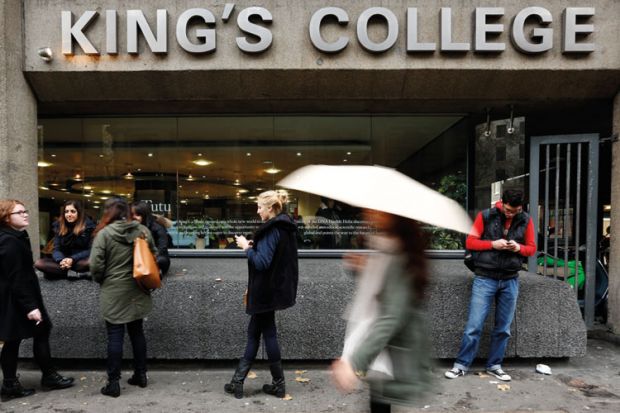Source: Reuters
King’s College London: up 15 places to 7
Download full REF 2014 results
Overall ranking of institutions
Overall ranking of institutions including power market share
Ranking of institutions on impact
Institutions ranked by subject
Ranking of institutions on output
King’s College London is arguably the biggest winner in the 2014 research excellence framework.
The institution has risen 15 places on grade point average, from joint 22nd in 2008’s research assessment exercise to seventh in 2014’s REF.
Cardiff University, which was also joint 22nd in 2008, has risen one position higher than King’s, to sixth, and comfortably achieved its strategic aim of ranking in the top 10.
However, Cardiff drastically reduced the number of people it submitted, from 1,030 full-time equivalents in 2008 to 738 this time. This means that the institution has actually fallen, to 18th position from 15th in 2008, when judged on research power, which is calculated by multiplying an institution’s GPA by the number of staff it submitted.
Some observers prefer the research power measure to GPA as the basis for rankings because it gives a better sense of which institutions are likely to win the most quality-related research funding – which is also calculated on the basis of the quality and volume of an institution’s submission.
In contrast to Cardiff, King’s improved its GPA while submitting more people: 1,369, compared with 1,172 in 2008. This means that its ranking on research power has risen from 11th to sixth, and its market share of total UK research power (which reflects its share of the annual £1.6 billion QR pot) has grown from 2.37 per cent to 2.85 per cent (see full figures on market share).
High risers
By GPA, Cardiff Metropolitan University recorded the largest rise, leaping 62 places, from 103rd to 41st. However, it submitted only 35 staff, compared with 102 in 2008, when it was known as the University of Wales Institute, Cardiff.
Other notable risers on GPA include Queen Margaret University (up from 129th to joint 80th) and the University of the Highlands and Islands (from joint 96th to joint 63rd). Among research-intensive institutions, Swansea University made the biggest leap, from joint 52nd position to joint 26th.
As for reversals, Soas, University of London suffered the greatest, dropping from joint 31st in 2008 to 61st. Another notable faller was the University of Essex, which slid 24 places to joint 35th on GPA.
The largest percentage point rise in market share of total UK research power was recorded by University College London, where it went from 3.83 per cent to 5.33 per cent. This reflects a large increase in its submitted headcount, from 1,793 to 2,566, after its absorption since 2008 of the School of Pharmacy and, just this month, the Institute of Education. It is now the largest institution by submission volume, followed by the University of Oxford and the University of Cambridge, but it is only joint 18th on its output GPA and joint eighth on overall GPA.
Northumbria University expanded its research power market share, from 0.26 per cent to 0.6 per cent, after more than doubling its submission volume. It is also the biggest riser when ranked by research power, climbing from 80th to 50th.
The University of Manchester was a notable institution to take a hit on research power. Its market share shrank from 3.87 per cent to 3.18 per cent with a submission of 263 fewer staff. Its ranking by GPA also dropped, from eighth to 17th.
London Metropolitan University fell the most on ranking by research power, down 32 places to 103rd.
Register to continue
Why register?
- Registration is free and only takes a moment
- Once registered, you can read 3 articles a month
- Sign up for our newsletter
Subscribe
Or subscribe for unlimited access to:
- Unlimited access to news, views, insights & reviews
- Digital editions
- Digital access to THE’s university and college rankings analysis
Already registered or a current subscriber? Login





